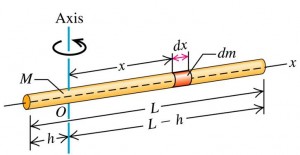Opinions and Moments of Inertia
 miniphysics.com -
"MoI in a Uniform Rigid Rod"
miniphysics.com -
"MoI in a Uniform Rigid Rod"
Extreme opinions on nuanced topics are a-dime-a-dozen. It’s easy to ignore the fact that there are many diverse views on these kinds of subjects and focus only on your own opinion. Another common reaction is to create extreme caricatures of other opinions on the topic of your interest.
The problem is that when the population concerned with the subject is large, and you focus on extremes then you ignore the subtleties of the opinions of the individuals involved. It’s better to jettison your generalizations and focus on any particular individual if the opportunity arises. The variations in their behaviours and views will far exceed the bounds of the generalizations you have established about their “category”.
But what if you don’t have an individual to focus on, or what if you’re making decisions about groups? Surely there must be better ways to make generalizations without falling into the trap of caricature? The layman’s statistical tool here is the average - Simply normalizing to the group… But shouldn’t extreme views carry more weight? Even if there is a small subgroup of individuals within a group with extreme views, you should grant more weight to these opinions as they have a greater impact on perceptions, as well as the direction of the group’s actions.
There is, however, another tool that is conceptually simple, and should be able to be taken into account if you can calculate an average, with just one other piece of information - what you feel should be considered “neutral”. These tools are the Moments of Inertia.
Moments of inertia are applicable in several contexts. One of these is the physics of momentum. Another one is structural-analysis. There are actually two related concepts coined “Moment of Inertia”, that is the concept of angular-momentum, and also the concept of geometrical structural-stiffness - The “2nd Moment of Inertia”. Both of these concepts can serve as useful analogies for opinion balancing.
It’s interesting to look at how each of the moments of inertia can be thought of in terms of application towards the dynamics of group-power-shifts, effective categorization of diverse opinions, as well as the implications of a shifting cultural mean.
What do you think?